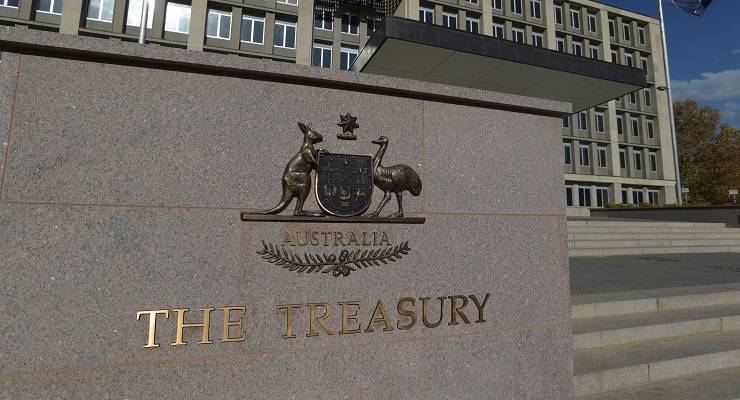
It is a happy accident that the coming budget is likely to be the last before the next federal election. The government has avoided the temptation to cut spending in the name of fiscal responsibility. That would have put post-pandemic economic recovery at risk.
For a while it seemed as if the treasurer was contemplating “budget repair” — that is, keeping new spending to modest levels and taking the windfall from better-than-expected economic growth to the bank.
Fiscal conservatives would have applauded such a budget as a first step towards reducing a record government deficit. It would not have reduced Australia’s equally record debt (while the budget remains in deficit, each new deficit further adds to debt) but total debt would be lower than under alternative strategies.
Josh Frydenberg was no doubt urged to take this path by those in his party who cling to the quaint idea that deficits signify bad government, some business lobbyists, and a stirring editorial from The Australian Financial Review.
Now it seems the call of the election has become the louder influence. The final budget strategy was almost certainly contested territory until recently, but over the past week there have been a multitude of announcements aimed at electoral gain — or to address perceived areas of government weakness — and abandonment of the budget repair line. The spending dogs are off the leash.
New spending includes aged care. That’s been clearly required since the Royal Commission into Aged Care Quality and Safety report. The only question was how much. To date the speculated figure is $10 billion over four years. At first blush this appears a large number, but it’s well short of the $7 billion the Grattan Institute says is needed (and other commentators put the figure even higher). So it might be more come budget night.
To that we can add $1.7 billion for childcare, personal income tax cuts, mental health funding, spending on natural disaster resilience, and tax cuts for brewers and distillers. Michael McCormack, the Nationals leader and deputy prime minister, announced more regional grants — possibly included in forward estimates.
Similarly it is not clear whether $747 million for Northern Territory Defence base upgrades is an addition to the existing Defence budget or a reallocation. If it is additional money, it will be announced on budget night. Other areas of new spending are likely to include climate change technology projects, boosting the vaccine rollout, and new or expanded quarantine facilities.
An austerity budget this isn’t.
That’s the right approach at present. Financially Australia is considered a safe bet, even more so off the back of our success in containing COVID-19. The world is happy to lend us money at derisorily low interest rates. If there are needs, the Australian budget has the capacity for spending to address them.
Debt is rising as a consequence, to a level that would have caused shock and outrage before COVID. As the last budget showed, it’s hardly a worry at all today.
Supporting employment is a more important economic priority. We see this in the government’s fiscal strategy, which has to be made public (a charter of budget honesty requirement). Frydenberg’s recently announced economic strategy of supporting the economy “until the unemployment rate is comfortably back under 6%” is already out of date, and we will see an update on budget night. The new target is below 5%. It’s a massive change from past budget strategies that focused on fiscal restraint.
Most economists look at the budget bottom line, including the totals for spending and revenue, and no deeper. Most industry and community lobby groups examine their areas of concern, whether they have received a handout or not. By these measures, the budget is likely to be received positively.
Where the commentary fails is in examining what the budget does not contain.
The raft of new election spending will give an immediate rush of excitement to areas it targets. It won’t help raise living standards over the long term — for that we need to address stagnant productivity, housing affordability and climate change.
For productivity to grow we need innovation and education — not only fixing our failing university funding system, but investments across the span of education, from early years, schooling and vocational education.
The recently announced $1.7 billion increase in funding for childcare was aimed squarely at workforce participation. The objective was assistance for parents (especially women), not improving children’s learning. Assistance in their early years helps set kids up better for learning throughout life. Reflecting the short-term nature of politics, this has barely been mentioned by either the government or opposition. Hopefully this benefit will flow regardless.
Other areas to improve productivity could include vocational skills training, communications infrastructure, regulation working more effectively, help for businesses to fail and move on. They are difficult and long term, so outside the scope of a pre-election budget.
Same goes for climate change. The government has apparently calculated it will never win over committed environmentalists who want serious action, so needs to do only enough to retain support from the “at least they are doing something” brigade.
So while the budget will at a macro level hit the right notes, based on information we have so far it appears it won’t deal with difficult long-term challenges. We will need to wait for an opportune post-election budget.
Stephen Bartos is a former deputy secretary of the Department of Finance and a regular contributor to The Mandarin and Crikey.








Looks like a vote-buying budget to me….and I am sure most of it will be dropped if they get re-elected.
It is probably a complete waste of time to pay any attention to the forthcoming budget, but it does perhaps provide an opportunity to list all the announced Govt fundings of the past year or two (or even just the past Budgets) with some assessment of what has, in fact, eventuated.
Exactly this.
And going forward, all media to caveat any announcement with a ‘here’s another gov’t announcement, we’ll get back to you to let you know if they have actually done it’.
Many of us could be described as belonging to the “at least they are doing something” brigade. The movement to reduce emissions has settled for token actions. Intermittent power from renewables can never fully supply a more or less constant demand, yet we repeatedly settle for a few more windmills to calm our conscience. We are among those who want the world’s target to be the pretense of “net zero” instead of the necessary “zero” emissions.
However Greta Thunberg is speaking for the oncoming generation when she says, “we are watching you” and “If you choose to fail us, we will never forgive you”. So if we want comfy beds in our old age, we had better do the full job.
Batteries are invented to store renewables, so no longer the oft repeated story of intermittent power.
Bushby Jane, it is most urgent, and very easy for you to check the figures. Any 100% renewables grid needs about two months of full power in storage against strings of unfavourable weather, poor seasons, bad years, etc. To calculate the duration of backup power capacity of SA’s “biggest lithium battery in the world”, divide its capacity (about 200 MWh) by SA’s full power (about 2000 MW).
Please tell other Crikey readers the (tiny) result. Like preachers defending the faith, some true believers will reply and talk fast. But more fact checking will show them and us that there is no hope of battery storage for 100% renewables. In particular, check for a phrase like, “with a little help from gas”, whereupon the 100% converts to something less than 50%.
I take your point and it is an issue… however the wind does blow at night and hydro can still create power then as well. The University of NSW identified 2,000 potential large and small hydro sites along the eastern escarpment of the dividing range that could be used as storage batteries..
The 15 hours of silence since I challenged BJ to check her facts and correct her error exemplifies a continuing tragedy for the Australian Left. We are not checking our facts. We are in denial, hiding our addiction to fossil carbon.
Let me complete that calculation now for any passers-by. The amount of battery storage for South Australian electricity can be sized by dividing the capacity of that giant battery by the peak demand…
200 MWh / 2000 MW = 0.1 h
That’s about six minutes worth of SA’s electricity consumption. Utterly negligible! If this “world’s biggest lithium battery” is the culmination of 200 years of battery technology, there is no hope of batteries balancing a 100% renewables supply across a grid. So when we hear someone say it, call it out as a lie.
Time to, yet again, beat your one-trick pony, the ever faithful Nukes.
Trouble is, it’s dead and would have been buried long ago, along with the multi thousand year waste if a safe site could be found.
Hint – not on this planet.
Maybe shoot it into the Sun?
The world’s climate scientists have spoken. Nature cannot handle anything more than zero emissions, except that they permanently worsen the greenhouse. Upgrading Australia’s power stations etc to non-fossil generators is going to take expenditure on “a wartime footing”.
Addressing the problem of how to get to zero emissions, Bushby Jane suggested renewables plus batteries, Milton Armitage suggested wind plus pumped hydro, and BanMorag has brought up the possibility of nuclear. No one should approve an expansion of gas. Although we can leave the choice of efficient technology to the international experts, we all must agree that we must spend what it takes, lest it cost us the earth.
Milton was close. UNSW with a professor from ANU, sorry, name escapes me found ver 25,000 suitable sites in Australia for pumped hydro. We need about 1900, distributed of course, same as our renewables. Investment in 200%, 500% or the Greens 700% capacity renewables is actually achievable and makes great sense. It just takes political will.
Tax cuts — again? If no money is coming in how the hell can money go out? It seems all this government does is cut taxes while hardly any of the big mining companies pay little if at all, not even royalties. Get that sorted and then there’s money to spend.
It’s being hinted that age pensioners will get a decent raise in September, not sure what this bunch think a decent raise for the pension is, the last one was $9 per fortnight. To add insult to injury, the word is that they intend to use robodebt against pensioners, that while they know it’s illegal. Proves that this bunch of ^Christians^ are working for the devil.
The AFR editorial seeking “budget repair” – meaning a federal government budget which is “back in the black”, is of course mainstream economic nonsense, on a par with the ‘flat-earthers’ of long ago.
It’s about time these characters read Stephanie Kelton’s bestseller: the’The Deficit Myth’, so they don’t reveal themselves to be totally irrelevant re policy required to deal with the real needs of the economy.
Alan Kohler gave a pretty good explanation of Modern Monetary Practice in The New Daily this morning.